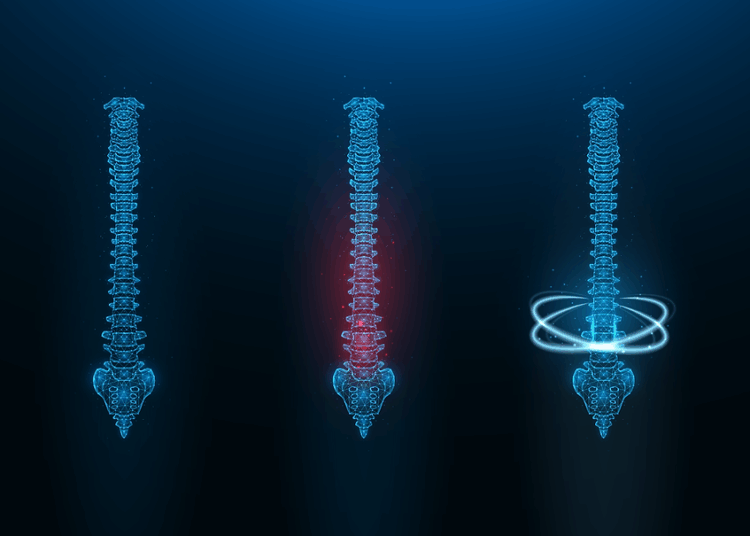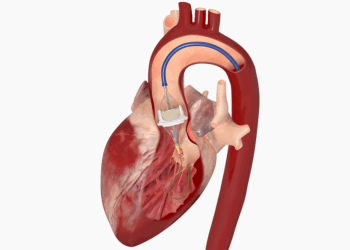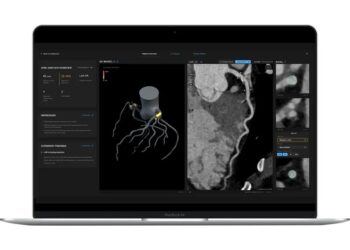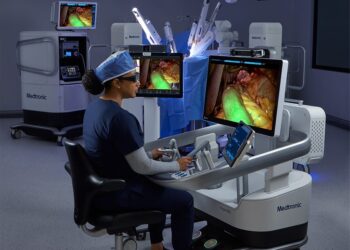### Pinpointing Pain: How AI and Spectroscopy are Revolutionizing Spinal Surgery
Chronic low-back pain is one of the most notoriously difficult conditions in medicine. For millions, it’s a debilitating reality, and for clinicians, it’s a diagnostic odyssey. The central challenge has always been identifying the precise source of the pain. A standard MRI can show us a degenerated or herniated disc, but it can’t tell us if that disc is the actual *culprit* generating the patient’s pain. This diagnostic ambiguity is a primary reason why surgical interventions for discogenic low-back pain have historically hovered around a 50% success rate—essentially a coin toss.
This is where a profound technological shift is occurring, moving us from merely looking at anatomy to interpreting biochemistry. Aclarion Inc.’s Nociscan platform is at the forefront of this evolution, and as an AI practitioner, I see it as a textbook example of how machine learning can transform a clinical “art” into a data-driven science.
#### The Anatomical Guessing Game of Standard MRI
A conventional MRI is a masterpiece of structural imaging. It provides high-resolution images of the spine, allowing surgeons to see disc herniations, spinal stenosis, and degenerative changes with incredible clarity. The problem is one of correlation versus causation. A 40-year-old may have three degenerated discs, but only one is producing nociceptive (pain) signals.
Operating on a disc that *looks* bad but isn’t the pain generator leads to what is known as failed back surgery syndrome. The patient undergoes a major procedure with no relief. This is the clinical dilemma Nociscan was built to solve, and it does so by adding a new layer of data: chemical analysis.
#### Beyond the Picture: Enter Magnetic Resonance Spectroscopy (MRS)
Nociscan leverages Magnetic Resonance Spectroscopy (MRS), a technique related to MRI. While an MRI machine is tuned to detect the signal from hydrogen atoms in water to create an image, MRS can be tuned to detect the spectral signatures of specific metabolites—the chemical byproducts of cellular processes.
It turns out that a disc undergoing painful degeneration has a distinct biochemical signature. The inflammatory and metabolic processes associated with nociception leave behind a trail of chemical biomarkers. MRS can detect this signature within a targeted disc.
However, the raw spectral data from an MRS scan is incredibly complex. It’s a noisy, jagged line graph filled with overlapping peaks and troughs. For the human eye, distinguishing the subtle patterns that indicate a “painful” disc versus a “non-painful” degenerated disc is virtually impossible. This is where the AI comes in.
#### The AI-Powered Interpreter: From Signal to Diagnosis
The core innovation of Nociscan is its AI platform, which acts as a master interpreter for this complex biochemical data. The process is a classic application of supervised machine learning:
1. **Data Training:** The AI model was trained on a vast dataset of MRS signals from intervertebral discs. Critically, each of these training samples was labeled with a ground truth—whether the disc was confirmed to be painful or non-painful through established (albeit invasive) diagnostic methods like provocative discography.
2. **Pattern Recognition:** The AI, likely a sophisticated classification model like a support vector machine or a deep neural network, learned to identify the high-dimensional, non-linear patterns in the spectral data that reliably correlate with discogenic pain. It isolates the faint “pain signal” from the background noise.
3. **Clinical Application:** In practice, the Nociscan platform analyzes the MRS data from a patient’s discs and, for each one, delivers a clear, binary output: a “Noci-positive” (painful) or “Noci-negative” (not painful) classification.
This removes the guesswork. The surgeon is no longer just looking at a structural anomaly; they are armed with functional, chemical evidence that points directly to the pain source. The results, as Aclarion CEO Brent Ness recently told *BioWorld*, are dramatic. Surgical interventions precisely targeted using Nociscan’s guidance have achieved a **97% success rate**. This isn’t an incremental improvement; it’s a doubling of the efficacy seen in conventional procedures, which stand at a grim 48% to 54%.
#### Conclusion: The Future is Functional
The Nociscan story is more than just a win for spinal surgery. It’s a blueprint for the future of AI-augmented diagnostics. It demonstrates a move away from purely anatomical imaging toward a more holistic, functional understanding of disease. By pairing an advanced sensing modality (MRS) with a powerful analytical engine (AI), we can uncover insights that were previously hidden within complex biological data.
This paradigm—using AI to interpret functional or metabolic data—has staggering potential across medicine, from identifying aggressive tumors in oncology to detecting early-stage neurodegenerative diseases. We are teaching machines not just to see what we see, but to understand the invisible chemical language of the human body. In the fight against chronic pain, that’s a revolution.
This post is based on the original article at https://www.bioworld.com/articles/723207-aclarions-nociscan-nearly-doubles-spine-surgery-success.






















